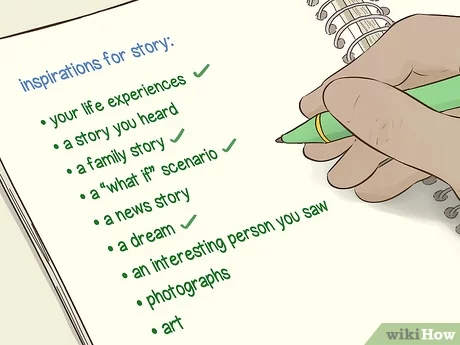The opening of a story is your opportunity to captivate your readers’ attention and draw them into your narrative world. One effective way to begin is by setting the scene with vivid description. Use evocative language to paint a picture of the setting, establishing the time, place, and atmosphere of your story. Whether it’s a bustling city street, a tranquil countryside, or a mysterious forest at twilight, immerse your readers in the sensory details that bring your world to life.
Introduce Compelling Characters
Another powerful technique for starting a story is to introduce compelling characters right from the outset. Whether it’s a protagonist facing a life-changing decision, an antagonist with nefarious intentions, or a supporting character with a captivating backstory, give your readers someone to root for—or against—from the very beginning. Use dialogue, actions, and inner thoughts to reveal key aspects of your characters’ personalities and motivations, inviting readers to invest in their journey.
Begin with a Bang: Action and Intrigue
For stories that thrive on excitement and suspense, consider starting with a bang by diving straight into the action. Open with a thrilling chase, a dramatic confrontation, or a mysterious event that leaves readers eager to unravel the mystery. By immediately engaging readers with a sense of urgency and intrigue, you can hook their interest and propel them forward into the heart of your story.
Pose a Thought-Provoking Question
One effective way to pique readers’ curiosity and invite them to ponder the deeper themes of your story is to begin with a thought-provoking question. Whether it’s a moral dilemma, a philosophical quandary, or a tantalizing mystery, pose a question that challenges readers’ assumptions and invites them to reflect on the complexities of the human experience. This approach can set the stage for a narrative that explores profound ideas and resonates with readers on a deeper level.
Create a Sense of Mystery and Suspense
Mystery and suspense are powerful tools for capturing readers’ attention and keeping them eagerly turning the pages. Begin your story with a tantalizing hint of something mysterious or unexpected—a shadowy figure lurking in the background, a cryptic message left behind, or a seemingly ordinary event with ominous implications. By sowing seeds of intrigue early on, you can cultivate a sense of anticipation that compels readers to keep reading.
Establish the Central Conflict
Every compelling story revolves around a central conflict—a struggle or challenge that drives the plot forward and keeps readers invested in the outcome. Begin your story by introducing the central conflict in a way that immediately grabs readers’ attention and sets the stage for the drama to come. Whether it’s a clash of personalities, a battle against external forces, or an internal struggle for identity and belonging, make it clear from the outset what’s at stake for your characters.
Planting Seeds of Meaning
Foreshadowing and symbolism are powerful literary devices that can add depth and richness to your story’s opening. Begin with subtle hints or symbols that hint at future events, themes, or character arcs, laying the groundwork for the narrative to unfold. Whether it’s a recurring motif, a cryptic symbol, or a seemingly innocuous detail with hidden significance, use foreshadowing and symbolism to intrigue readers and invite them to uncover the deeper layers of your story.
Embarking on the Journey
In conclusion, beginning a story is both an art and a science, requiring careful consideration of structure, pacing, and tone. Whether you choose to set the scene with vivid description, introduce compelling characters, begin with a bang of action and intrigue, pose a thought-provoking question, create a sense of mystery and suspense, establish the central conflict, or employ foreshadowing and symbolism, the key is to capture readers’ attention and invite them to embark on a journey of discovery. So take a deep breath, trust your instincts, and dive into the world of storytelling with confidence and creativity.
